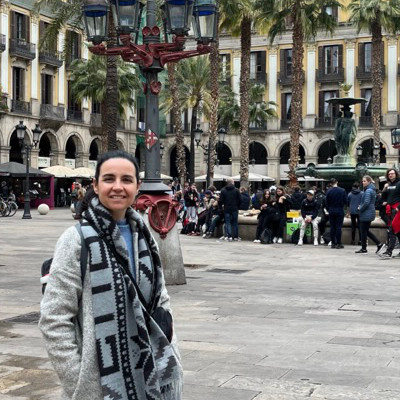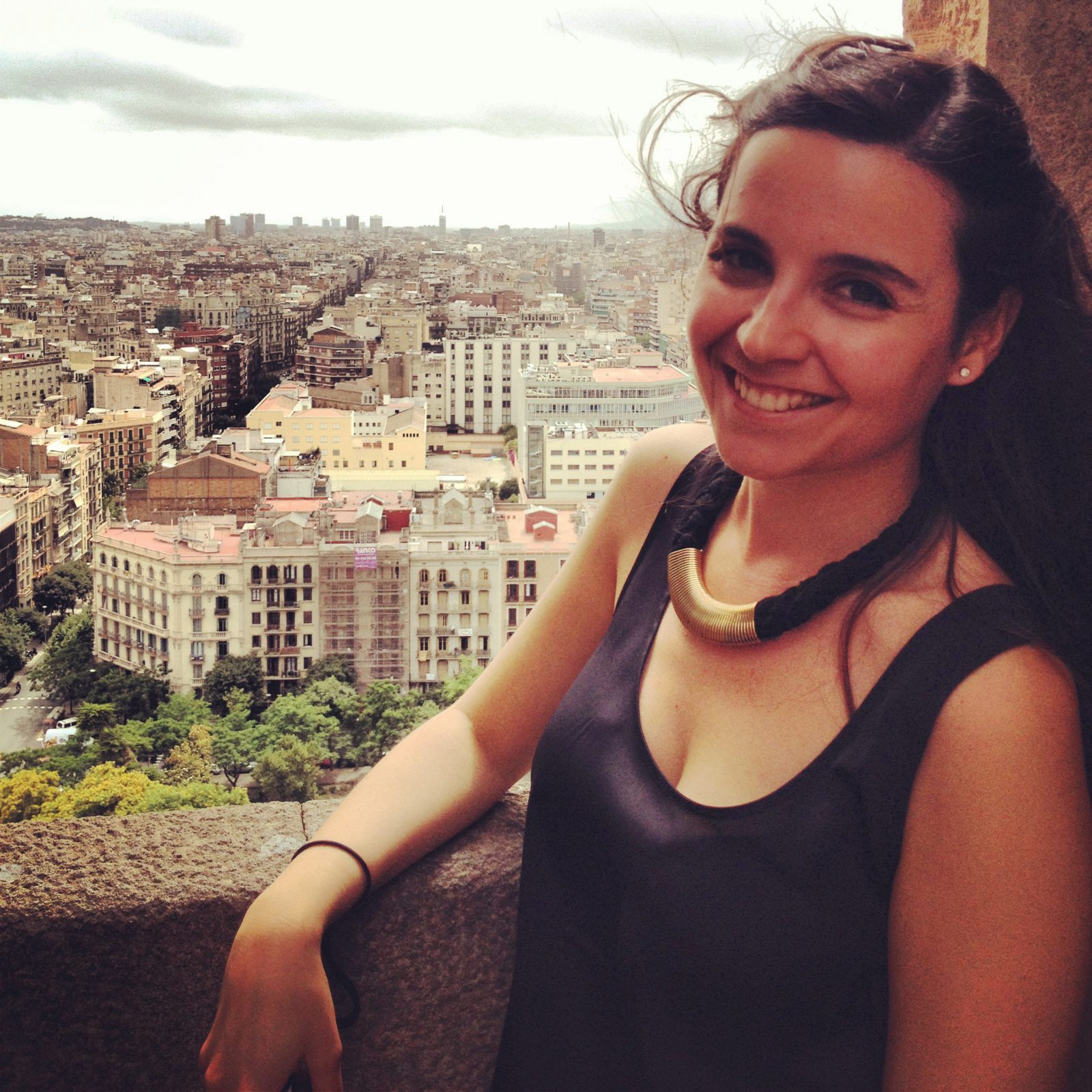Plaça de Sant Jaume is a place you often come across during a visit to Barcelona’s Gothic Quarter, and it is worth taking a moment to appreciate. Here you will find two of the most powerful buildings in Barcelona: on one side, the City Hall, Ajuntament, and on the other side, the administrative palace of the Catalan government, Palau de la Generalitat. Both buildings are rarely open to the public, but they still offer a splendid view from the outside for photography.
What to See and Do at Plaça de Sant Jaume
Since Roman times, Plaça de Sant Jaume has been the political and religious center of the city, the place where all the main roads of the city converged. Although the religious connotation has been lost over time, Plaça Sant Jaume is still considered the political heart of the city. Residents use it both to celebrate and to protest from time to time.
The City Hall or Ajuntament
The City Hall or Ajuntament (ayuntamiento in Spanish), also called the ‘Casa de la Ciutat’ (House of the City), was put into function in 1396, when the Consell de Cent (the Council of One Hundred; a representative council of a hundred guild masters and citizens that functioned as a governing body) sought a place for its meetings of the local government. Until that time, these meetings had taken place in peculiar locations such as the stairs at the Palau Reial Major at Plaça del Rei, at Plaça Reial, or in the (now gone) monastery of Santa Caterina.
In the street of Carrer de Ciutat, you can see the old Gothic facade from 1399, which served as the main entrance to the city hall until 1847. That year, the Sant Jaume square was urbanized, and the old church of Sant Jaume, with its monastery and cemetery, was destroyed.
The current neoclassical facade on Plaça de Sant Jaume, designed by Josep Bover, was also built in 1847. It depicts King Jaume I, the creator of the Consell del Cent, and the illustrious and respected Joan Fiveller (also a member of the Consell de Cent).
In 1928, the architect Antoni de Falguera i Sivilla built the first expansion of the city hall building, the so-called Edifici Nou with the facade on Plaça de Sant Miquel. In 1970, the last expansion followed, under the direction of Llorenc Garcia-Barbón and Enric Giralt i Ortet, with decorations by Josep Maria Subirachs. This modern building, called Edifici Novíssim, is also located near Plaça de Sant Miquel. The three buildings are internally interconnected.

During a visit to the Ajuntament, you can view the magnificent Gothic hall of Saló de Cent, built by Pere Llobet. This was the location where the Consell de Cent, from 1373 until its end in 1714, held its meetings and debates. Also noteworthy is the Saló de Cròniques, decorated with paintings by Josep Maria Sert in 1928, and ‘The Four Seasons’, painted by Albert Ràfols Casamada in 1982 on the ceiling of the Tourism Office (located at the corner with Carrer Ciutat and always open to the public). The Gothic hall and staircase of the city hall building also serve as an authentic art gallery, featuring sculptures by Gargallo, Llimona, Navarro Subirachs, Marès, Miró, and Clarà.
The Ajuntament is open to the public every Sunday from 10:00 AM to 2:00 PM, and on February 11th (Santa Eulàlia), April 23rd (Sant Jordi), and May 30th (Corpus Christi), from 10:00 AM to 8:00 PM. You can visit the Ajuntament independently or with a guide. Guided tours are held on Sundays at the following times: in English at 10:00 AM, Spanish at 10:30 AM, and Catalan at 11:00 AM, 11:30 AM, and 12:30 PM. Admission is free, and no prior reservation is required.
The Government Building or Palau de la Generalitat
The regional government of Catalonia is housed in the Palau de la Generalitat, also located on Plaça de Sant Jaume, directly opposite the Ajuntament, the city hall of Barcelona. Like the Ajuntament, the original main entrance of this building was on the side, at Carrer Bisbe.
Behind its neoclassical facade, the Palau de la Generalitat contains elements of Gothic, Renaissance, and Baroque architecture. This diversity of styles is the result of the palace’s lengthy construction, which began in the 15th century and ended in the mid-17th century.
The main entrance at Plaça Sant Jaume was the work of Pere Blai (1597-1619). On the front, above the entrance to the building, is Sant Jordi (Saint George), the patron saint of Catalonia, on horseback. Of the four columns that adorn the entrance, it is said that they date back to Roman times, and architect Pere Blai, who gave the facade of the Palau de la Generalitat its Renaissance look, brought them from Tarragona to Barcelona.
Once inside, you’ll find Sant Jordi in multiple locations, such as in the eponymous hall, the Saló de Sant Jordi (to read more about Sant Jordi and his legend click here). Inside the Palau, you’ll also find a remarkable Gothic cloister by Marc Safont, a beautiful chapel, and the famous Pati del Tarongers (Patio of the Orange Trees). The patio was constructed between 1532 and 1547 and is the place where many official events of the Catalan government still take place.
Three times a year, on April 23rd (Sant Jordi), September 11th (La Diada), and September 24th (La Mercè), there are open houses at the Palau de la Generalitat, and you can visit without an appointment. You may have to wait in line, but it’s worth it! If you prefer to visit the Palau de la Generalitat on another day, make an appointment online beforehand via the website of the Catalan government.

Carillon Concerts in the Pati dels Tarongers
A unique way to experience the inside of the Palau de la Generalitat, outside of open house days, is by attending one of the carillon concerts held in the Pati dels Tarongers. These are very special concerts, not only because of the beautiful location but also because the music is played by the carillonneurs of the Palau de la Generalitat. The current carillon (also known as the bell tower or chime) of the Palau de la Generalitat has 49 bronze bells, weighing a total of 4,898 kilograms.
The concerts are free and take place on every first Sunday of the month at 12:00 PM. The estimated duration of the concert is 60 minutes. On days like April 23 (Sant Jordi), September 24 (La Mercè), and December 26 (Sant Esteve), additional grand carillon concerts are organized.
Note: The entrance for the concerts is at Carrer de Sant Honorat number 30, and opens 30 minutes before each concert starts. Once the seating capacity is reached, it’s only possible to hear the carillon from the streets of the Gothic Quarter.
Roman Traces
Plaça Sant Jaume is located on the site where the main streets of Roman Barcelona (Barcino) converged. These were the Cardus (now Carrer de la Llibreteria and Carrer del Call) and the Decumanus (now Carrer Ciutat and Carrer del Bisbe). This was the location of the Roman Forum, the center of the Roman city where the Temple of Augustus once stood. The remains of this temple can still be admired in the nearby Carrer Paradís. Access is completely free, and as it is a hidden gem, it is rarely crowded. A must-see when you are near Plaça Sant Jaume.
Events at Plaça de Sant Jaume
Plaça de Sant Jaume has been the scene of many events. Traditionally, this square is the epicenter of the city festivals of La Mercè and Santa Eulàlia. Here, opening celebrations are held, human towers are built, there is much dancing, and festive parades with giants are organized.
At Christmas, a nativity scene is always set up, visited by hundreds of Barcelonans.
Plaça de Sant Jaume is also the place where FC Barcelona celebrates its titles with its supporters and where people protest against the government or the city council.
On Sunday evenings, people gather here to dance the sardana, the national dance of Catalonia. You can often see a newlywed couple coming out of the Ajuntament.
There is almost always something happening at Plaça de Sant Jaume!

History of Plaça de Sant Jaume
In the old Roman city of Barcelona, Sant Jaume Square was the Forum, the meeting place, and the political heart of Barcino. This is still the case, as the two most important political bodies of Barcelona are located here.
Historically, the first form of government of the city was the Consell de Cent, which governed the city with its hundred members from 1373 to 1714. They did so from the Saló de Cent in the city hall. The Palau de la Generalitat was eventually chosen as the permanent delegation of the Corts Catalanes, established as the governing body of Catalonia in 1283, considered to be the first parliament in Europe.
In 1823, it was decided to create a large square between the two buildings, and the church of Sant Jaume, with its cloister and cemetery, was removed from the center. Since then, we have a better view of both buildings; the Ajuntament and the Palau de la Generalitat, with their imposing and powerful facades.
One of the most memorable moments that occurred in this square was the return of General Josep Tarradellas, who returned from exile following the death of General Franco in 1977. From the balcony of the Palau de la Generalitat, he called out to the crowd, “Catalans, ja sóc aquí!” (Catalans, I am back!).
How to Get to Plaça de Sant Jaume
Plaça de Sant Jaume is located in the heart of the old city center at the intersection of Carrer Ferran / Carrer de Jaume I with Carrer del Bisbe / Carrer de la Ciutat. The easiest way to reach Plaça de Sant Jaume is by metro, getting off at Jaume I (L4) or Liceu (L3).
Tip: Follow my Gothic Quarter Walking Tour to discover more interesting places in the area.
Useful information
Price: Free.
Opening Hours: Not applicable.
Address: Plaça de Sant Jaume 08002 Barcelona
Public Transportation:
Metro: Jaume I (L4), Liceu (L3)
Bus: 47, 120, N8, N28, N70, V15, V17


